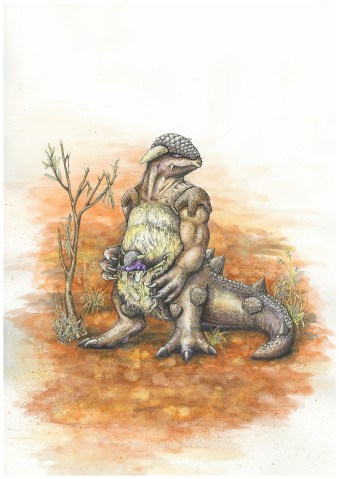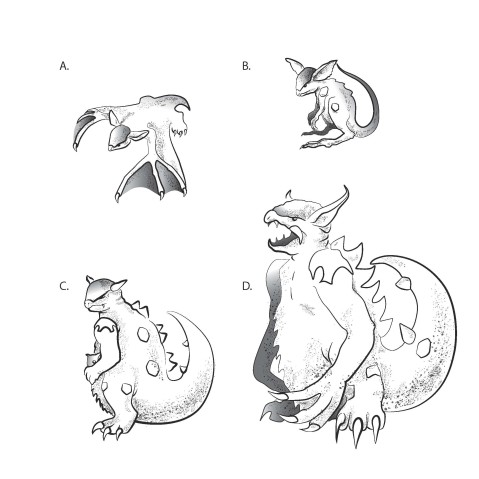Column: Creativity and statistics at the heart of Pokémon Go research
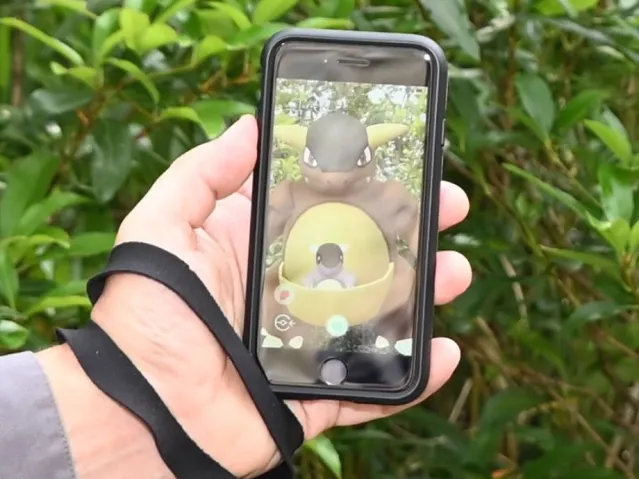
The latest OIST column in the Asahi Shimbun GLOBE+ is out now! This month, science writer Lucy Dickie interviewed Dr. Dan Warren about his research using Pokémon Go to assess the accuracy of species disribution models.
The article is in Japanese, but the original English version can be read below.
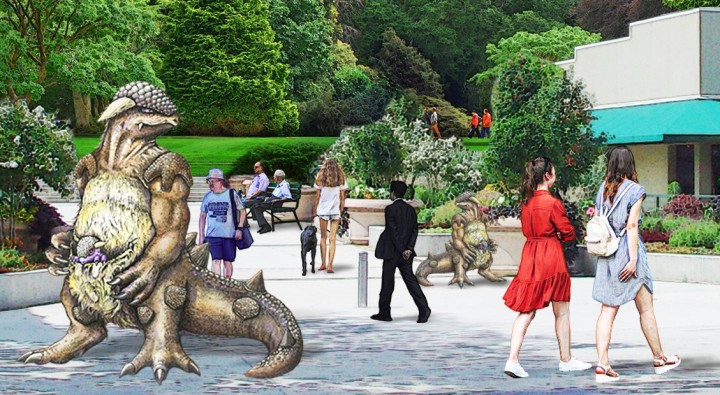
Creativity and statistics at the heart of Pokémon Go research
Teaser: Ecologist Dr. Dan Warren says that science is a compromise between your own creativity and what reality will let you get away with.
The Okinawa Institute of Science and Technology Graduate University (OIST) is situated amongst the subtropical jungle. It’s common to look out from the campus and see a Ryukyu fruit bat swoop by or a wild boar dash into the undergrowth. There are habu snakes, crows, geckos, and spiders. But along the pathways and amongst the trees lurks a different type of ‘wildlife’ – the fictional variety, the kind that you need a specialized AI device (aka your smartphone) to spot.
When I caught up with Dr. Dan Warren, a statistical ecologist at OIST, we decide to hunt for this type of ‘wildlife’ on the jungle path just behind my office… and we came across quite a few individuals.
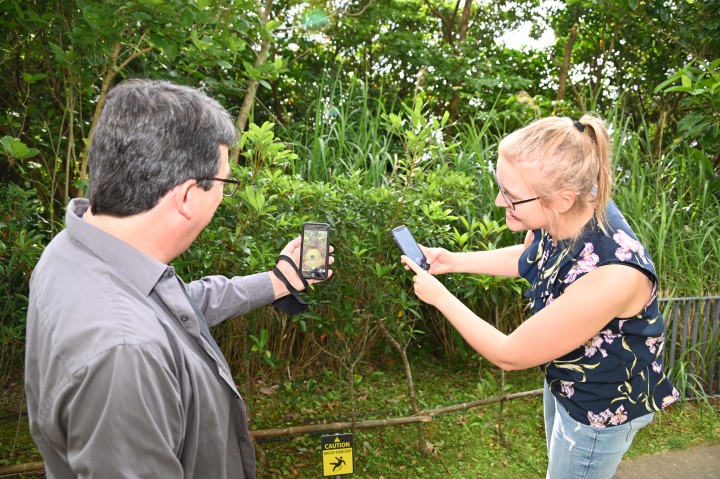
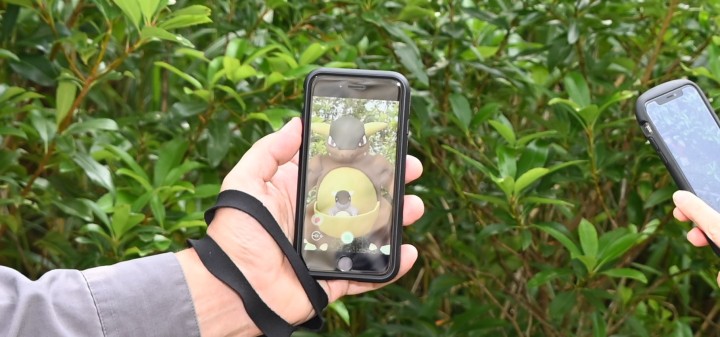
I’d never embraced the Pokémon Go craze and neither, as it turned out, had Dan until he started working on this project. But, he acknowledged, the game has been responsible for getting a lot of people outside and exploring nature. It also formed the base of his most recent research paper on wildlife conservation. Dan originally trained in evolutionary biology but, after developing a quantitative skillset, he now considers himself more of an ecologist.
“I was always a bit of a computer geek and I picked up statistics along the way,” explained Dan. “This skill set means I can look at anything – the evolution of brains in reef fishes, the conservation of European squirrel populations, the diversity of ants on islands.” And, apparently, the distribution of species in Pokémon Go.
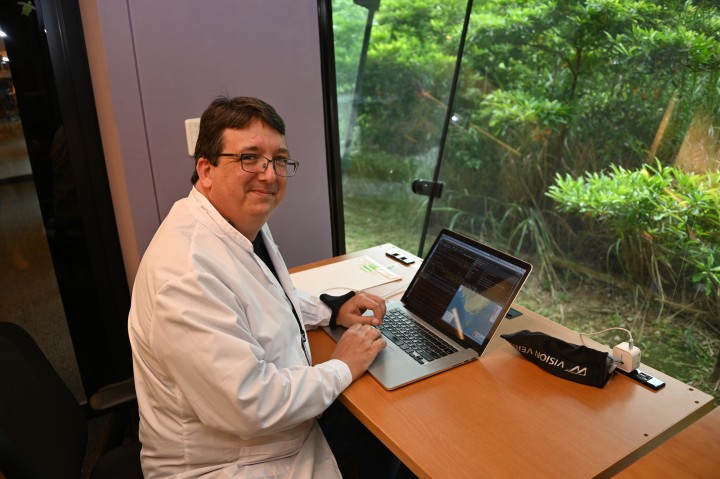
Dan’s career path followed an unusual trajectory. He grew up in Oklahoma, right in the center of the United States (about ten miles from the infamous park where the documentary Tiger King was set). His family was deeply religious, and he absorbed the idea that evolution couldn’t explain the diversity of the natural world. At 15, he left school early to pursue life as a musician. Then, in his mid-20’s, he began an undergraduate degree in Biology at the University of Oklahoma as part of a program to get adults to university.
Dan explained how, for him, imposter syndrome was very real. “I was a high school dropout and had never been around scientists. It was this insane dream that seemed to be happening. I was so sure someone was going to figure out that I didn’t belong there, and I was going to be kicked out.”
Despite this, Dan excelled in academia, and an undergraduate degree soon led to a PhD, which was followed by four postdoctoral fellowships, two of which were in Australia.
Ironically, one thing that captivated him from the start of his career, was the theory of evolution. “Even though I was no longer religious by that point in my life, I’d absorbed this idea that science couldn’t really explain the diversity of life on Earth. It’s only in college that I finally had the theory of evolution by natural selection presented to me accurately and it was just such a captivating idea. We don’t need magic to explain the world around us. Evolution happens at this small, individual level but the cumulative effects of these tiny occurrences eventually generate all the fish we find on a coral reef, and the diversity in a tropical rainforest, and a whole swath of interesting behaviors.”
It was in Australia where Dan met up with coauthors for his most recently published research, which focuses on the Kangaskhan, a Pokémon Go character normally found exclusively in Australia. The research idea was originally born as an April Fool’s Day prank. The researchers found a hobbyist website where gamers recorded the location of kangaskhan. They then used species distribution models to see how climate change would impact the suitability of habitat for this species over the next few decades ... but, along the way, the project morphed into something quite groundbreaking.
“We know that species distribution models are biased,” explained Dan. “I was talking to one of my coauthors about this and he made an offhanded remark ‘too bad you can’t measure the bias...’ and literally within 10 seconds, I realized that I could. It was a eureka moment. I just thought … that’s a simple statistical test… why haven’t I thought about it before…?”
Dan finds creating statistical tools and software deeply satisfying. He’s produced toolkits that many people have used in their own research and that have been cited thousands of times. This most recent statistical tool means that researchers will be able to refine existing species distribution models, which are commonly used by stakeholders and policymakers to estimate how species will respond to changes in the environment, such as increasing temperatures, rainfall, or changes in plant cover. This could have huge implications for wildlife management, and it all came from mixing Pokémon Go with traditional research.
“Science is a compromise between creativity and what reality will let you get away with,” said Dan. “It really benefits from a diversity of viewpoints – they increase the stock of ideas we have available to us to test. I have an atypical background, with my erratic educational trajectory and artistic endeavors, and this impacts the ideas I come up with and how I respond to information.”
Of course, a great example of this is the Pokémon Go paper. “This research was a lot of fun, the paper is full of Pokémon jokes, and, most importantly, the results could go on to inform thousands of other studies. It’s this intersection between creativity and reality – art and science.”
